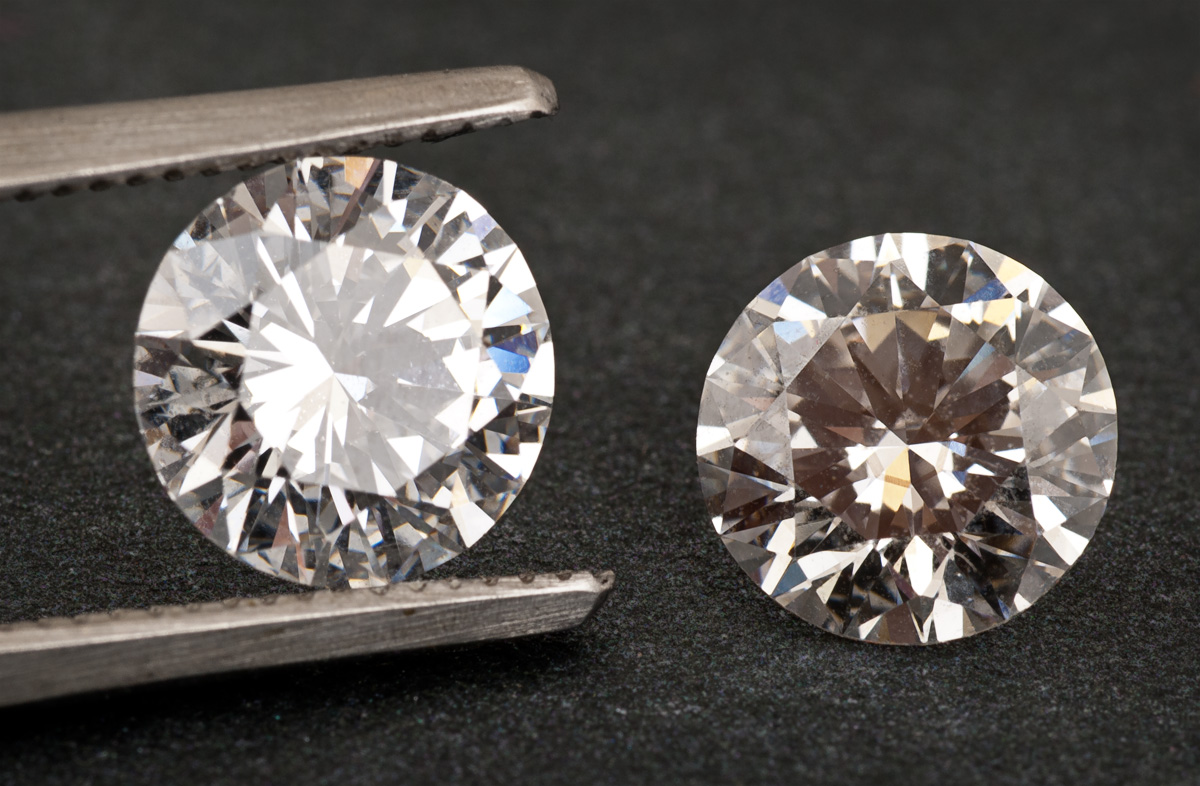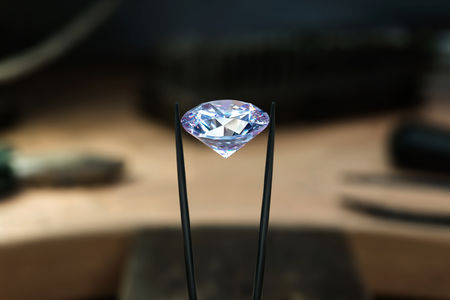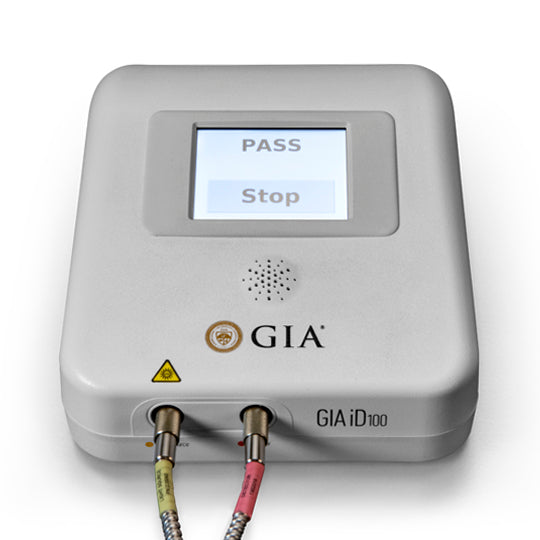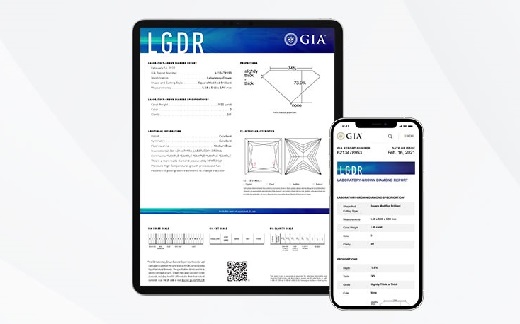Diamonds have captivated human hearts for centuries. Their exquisite beauty, rarity, and durability have made them one of the most sought-after gemstones in the world. However, with advancements in technology, scientists have found a way to create diamonds in a laboratory setting. These lab-grown diamonds, also known as synthetic diamonds, have sparked a new wave of interest among consumers and jewelers alike. But how can we be sure that these lab-grown diamonds are as valuable and authentic as their natural counterparts? Enter the world of diamond testing.
In this blog post, we will delve into the fascinating world of testing lab-grown diamonds. We will explore the various methods used by gemologists to distinguish between natural and synthetic diamonds, ensuring transparency and trust in the diamond industry.
The Rise of Lab-Grown Diamonds
Before we dive into the testing methods, let’s briefly discuss the rise of lab-grown diamonds and their growing popularity in recent years. Lab-grown diamonds are created through a process called chemical vapor deposition (CVD) or high-pressure, high-temperature (HPHT) synthesis. These techniques mimic the natural conditions under which diamonds are formed deep within the Earth’s crust.
One of the primary reasons for the increasing demand for lab-grown diamonds is their ethical and environmental advantages. Unlike natural diamonds, which are often associated with controversial mining practices and environmental impact, lab-grown diamonds are created in a controlled environment without any negative ecological consequences.
Lab Grown Diamonds have essentially the same chemical, optical and physical properties and crystal structure as natural diamonds. Like natural diamonds, they are made of tightly-bonded carbon atoms. They respond to light in the same way and are just as hard as natural diamonds. The main differences between Lab Grown and natural diamonds lie in their origin. Think of it this way: Lab Grown Diamonds are like ice from your refrigerator, while natural diamonds are like ice from a glacier. They are both ice, although their formation stories and age are very different.
The Need for Diamond Testing
Lab-grown diamonds may offer an ethical alternative to natural diamonds, but it is crucial to ensure that consumers are getting what they pay for. The diamond industry relies heavily on trust and authenticity. Therefore, accurate and reliable testing methods are essential to differentiate between natural and lab-grown diamonds.
Gemologists employ a range of techniques to determine the origin of a diamond, whether it is natural or lab-grown. These testing methods involve a combination of scientific analysis, advanced equipment, and expert knowledge.
How are Lab Grown Diamonds made?
 There are two main processes used to create Lab Grown Diamonds:
There are two main processes used to create Lab Grown Diamonds:
1. High Pressure, High Temperature (HPHT)
With this method, Lab Grown Diamonds are produced using high-pressure, high-temperature conditions similar to what natural diamonds experience on the earth. HPHT diamond growth occurs at pressures of 5–6 GPa and at temperatures of 1300–1600°C.
Lower-quality diamonds, whether natural or lab-grown, can also be put through the HPHT process to improve color. In addition to making diamonds more colorless, this process can also be used to change the color of diamonds to pink, blue or yellow. The diamond would then be called a “treated” diamond. This is disclosed in GIA reports.
 2. Chemical Vapor Deposition (CVD)
2. Chemical Vapor Deposition (CVD)
This technique enables scientists to grow Lab Grown Diamonds using moderate temperatures (700°C to 1300°C) and lower pressures. Carbon-containing gas is pumped into a vacuum chamber and deposited onto a diamond seed, crystallizing as a Lab Grown Diamond. The eventual size of the diamond depends on the time allowed for growth.
Testing Methods for Lab-Grown Diamonds
Spectroscopy:
Spectroscopic analysis plays a vital role in diamond testing. By examining the diamond’s interaction with light, gemologists can gather valuable information about its composition and structure. Techniques such as UV-Vis spectroscopy and infrared spectroscopy can reveal distinct patterns and absorption features that help distinguish between natural and lab-grown diamonds.
Microscopy:
Microscopic examination is another crucial step in diamond testing. Gemologists use high-powered microscopes to observe the internal features and growth patterns of a diamond. Natural diamonds often exhibit unique characteristics, such as inclusions and growth lines, which can help differentiate them from synthetic diamonds.
Diamond Verification Instruments:
Gemological laboratories utilize advanced instruments specifically designed for diamond testing. These instruments can measure a diamond’s thermal conductivity, electrical conductivity, and luminescence properties. Natural and lab-grown diamonds exhibit different behaviors in these tests, allowing gemologists to make accurate determinations.
Diamond Grading:
Diamond grading is a comprehensive evaluation of a diamond’s quality based on the famous “Four Cs” – carat weight, color, clarity, and cut. While lab-grown diamonds can possess similar characteristics to natural diamonds, experienced gemologists can often identify subtle differences in these grading factors that indicate whether a diamond is synthetic or natural.
Isotope Analysis:
Isotope analysis is a highly precise method used to determine a diamond’s origin. Natural diamonds have distinct isotopic compositions that reflect the unique geological conditions under which they formed. Isotope analysis compares the ratios of different isotopes present in a diamond to establish its authenticity.
How does GIA evaluate Lab Grown Diamonds?
When a Lab Grown diamond is submitted to a GIA laboratory, it is first examined to determine if it is natural or laboratory-grown. Then, GIA graders evaluate it using the 4Cs, a standard of evaluation created by GIA and implemented all over the world. Our graders evaluate each laboratory-grown diamond with the same meticulous care as natural diamonds.
Using spectroscopy and other advanced testing methods, GIA scientists can determine how a diamond was grown—through the high-pressure, high-temperature (HPHT) method or the chemical vapor deposition (CVD) method. As an added precaution to protect consumers, GIA also laser-inscribes the diamond’s girdle with the report number and a statement that identifies the diamond as lab-grown.
Laboratory-grown diamonds are becoming increasingly popular for their fiery sparkle, exceptional quality, and ability to maximize your budget. But do these stunning gems pass the same tests used to measure the quality of natural diamonds? Here’s how laboratory-grown diamonds stack up to their natural counterparts.
Can a jeweler tell that a diamond is lab-grown?
Developed in dedicated facilities, laboratory-grown diamonds possess the same chemical properties (i.e. pure crystallized carbon) and visual characteristics as natural diamonds that are mined from the earth. Depending on the size of the stone, lab-grown diamonds can take up to a month or more to create. Jewelers can tell that a diamond is lab-grown thanks to microscopic inscriptions that identify them as such. Without highly specialized equipment, however, it isn’t possible to know whether a diamond was naturally mined or grown in a lab.
https://www.helzberg.com/do-lab-grown-diamonds-pass-diamond-test
GIA iD100® GEM Testing Device
 The GIA iD100® gem testing device combines advanced spectroscopic technology and more than 60 years of GIA diamond and gemstone identification research to deliver a sophisticated and easy-to-operate desktop instrument to screen your stones. Small, yet powerful, the GIA iD100 gives you a simple and clear determination in under two seconds and an unrivaled accuracy that lets you get on with business confidently.
The GIA iD100® gem testing device combines advanced spectroscopic technology and more than 60 years of GIA diamond and gemstone identification research to deliver a sophisticated and easy-to-operate desktop instrument to screen your stones. Small, yet powerful, the GIA iD100 gives you a simple and clear determination in under two seconds and an unrivaled accuracy that lets you get on with business confidently.
Natural Vs Lab Grown Vs Simulants
The GIA iD100 distinguishes simulated and laboratory-grown diamonds from natural diamonds. It can test colorless to near-colorless, blue-to-green, and brown diamonds.
Not all UV diamond testers are created equal. Rather than using UV light, which can lead to false readings, the GIA iD100 uses fluorescence spectroscopy – one of the most accurate and advanced technologies available to determine if a stone is natural.
Test mounted jewelry with pinpoint accuracy
The GIA iD100 was designed with a probe that is easily manipulated to reach every diamond in mounted jewelry. Due to the small, pinpoint the size of the probe, you can test diamonds as small as 0.9mm in diameter.
No graphs, colors, reference charts, or data to interpret to determine if your stone is a natural diamond or not. In just two seconds you get a simple “Pass” for natural diamonds and “Refer” for stones that need more testing.
Pink Diamond Software Upgrade
 The GIA iD100® Pink Diamond Software Upgrade is an add-on to the device available that utilizes the advanced spectroscopic technology. This is combined with GIA’s pink diamond identification research, to distinguish natural from lab-grown diamonds and diamond simulants. The natural diamonds whose pink color is introduced by treatments involving irradiation and annealing.
The GIA iD100® Pink Diamond Software Upgrade is an add-on to the device available that utilizes the advanced spectroscopic technology. This is combined with GIA’s pink diamond identification research, to distinguish natural from lab-grown diamonds and diamond simulants. The natural diamonds whose pink color is introduced by treatments involving irradiation and annealing.
The GIA iD100® employs highly-sensitive spectroscopy technologies to detect trace amounts of diamond lattice defects. The portable device is non-destructive to stones and was created to be quick, highly reliable, and with broad applications to address the needs of the trade.
Do Lab Grown Diamonds pass a diamond tester?
 Because diamonds are fine conductors of heat, they are tested for authenticity using heat resistance testers. Thermal Conductivity and Electrical Conductivity are the two types of testers used.
Because diamonds are fine conductors of heat, they are tested for authenticity using heat resistance testers. Thermal Conductivity and Electrical Conductivity are the two types of testers used.
Helzberg Diamonds uses Electrical Conductivity to test diamonds for nitrogen, which forms naturally while the stone grows in the earth. However, since specific lab-grown diamonds are created from high-quality diamond seeds, they may contain less nitrogen as well as trace amounts of boron.
This can sometimes cause a false negative. This doesn’t mean the diamond isn’t natural; laboratory-grown diamonds are still physically, chemically, and optically identical to natural diamonds.
Diamond testers can be misleading. This is why our center stones are graded by an independent, 3rd party lab (GCAL) to confirm they are, in fact, real diamonds.
The Importance of Certification
To ensure transparency and build consumer confidence, reputable gemological laboratories provide certification for diamonds. These certifications document the results of the comprehensive testing process and confirm the authenticity of the diamond. When purchasing a lab-grown diamond, it is essential to request a certification from a trusted laboratory.
Conclusion
Testing lab-grown diamonds is an intricate process that combines scientific analysis, advanced equipment, and expert knowledge. Spectroscopic analysis, microscopy, diamond verification instruments, diamond grading, and isotope analysis all play crucial roles in distinguishing between natural and synthetic diamonds.
As they gain popularity as an ethical alternative to natural stones, the importance of accurate testing methods cannot be overstated. By ensuring transparency and trust in the diamond industry, consumers can confidently choose lab-grown diamonds without compromising on quality or authenticity.
Ultimately, whether you choose a lab-grown or natural diamond, it is the emotional significance and personal connection that truly matters. Diamonds, regardless of their origin, continue to symbolize love, beauty, and everlasting commitment.
So, whether you opt for a shimmering natural diamond or an ethically produced lab-grown diamond, may it sparkle on your finger as a symbol of joy and lasting memories.




